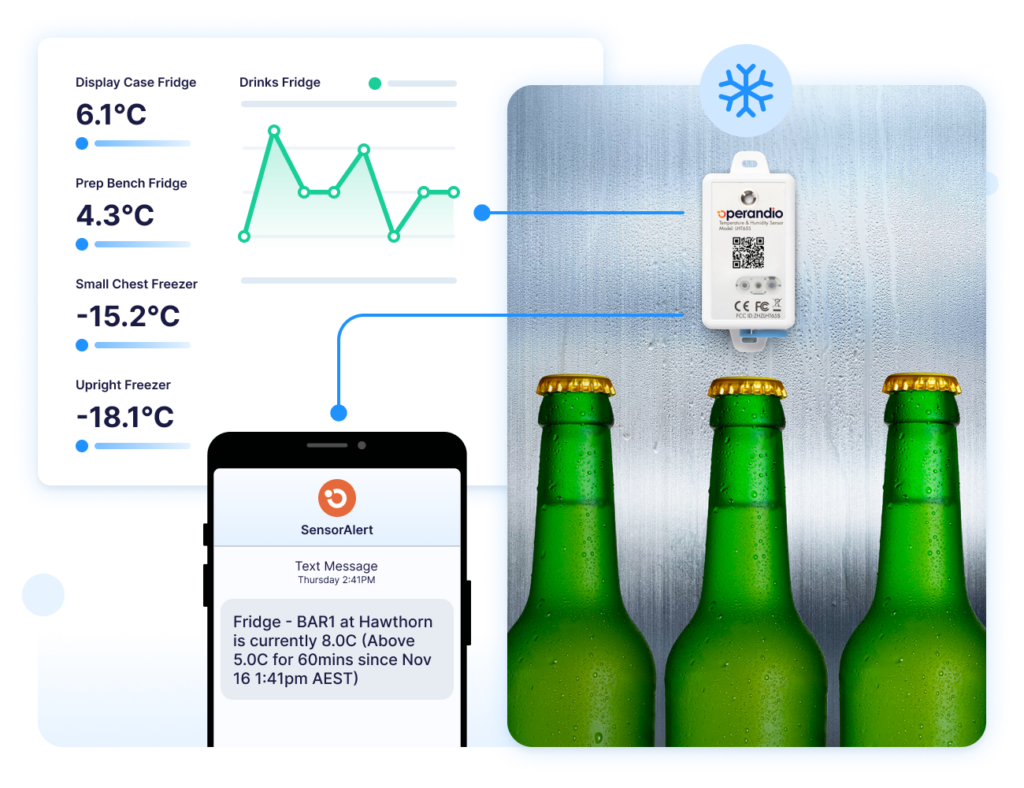2025 Restaurant Employee Handbook & More
Key Takeaways
- A restaurant employee handbook is a written manual that outlines expectations, policies, and procedures for your staff.
- It improves onboarding, training, and compliance, while reducing misunderstandings and legal risks.
- Your handbook should cover key areas like code of conduct, scheduling, payroll, health and safety, and conflict resolution.
- With the right template and tools, creating and maintaining a handbook is easier than ever — especially with platforms like Operandio.
Running a restaurant is hectic enough without having to answer the same policy questions over and over again. From handling no-shows to dealing with dress codes, every team needs one thing: clarity.
That’s where a restaurant employee handbook comes in.
In this guide, you’ll get everything you need to create a clear, up-to-date handbook for 2025. We’ll walk you through exactly what to include, why it matters, and how to keep it organized.
Let’s break it down so you can spend less time explaining rules and more time running your restaurant.
What is a restaurant employee handbook?
A restaurant employee handbook is a clear, written guide that outlines your business’s expectations, policies, and procedures for all staff members.
Think of it as your go-to manual for how things work — from shift scheduling to food safety rules. It sets the tone for your workplace culture, clarifies responsibilities, and helps every team member understand what’s expected from day one.
Whether you’re managing one location or many, a well-structured digital employee handbook brings consistency, reduces confusion, and supports smoother day-to-day operations. It also complements your restaurant training manual and knowledge base, giving staff quick access to essential procedures (like knowing who your first aid-trained staff are during emergencies).
Why every restaurant needs to have a restaurant employee handbook
A well-written restaurant employee handbook gives your team a shared understanding of what’s expected, how things are done, and what to do when issues come up. It’s not just about rules — it’s about setting your team up for success.
Operandio makes it easy to build, update, and share your handbook in one central place, so your team always stays aligned — and your employee training software stays fully integrated with your processes.
Here’s why having a handbook matters:
- Sets clear expectations for roles, responsibilities, and behavior from day one
- Supports compliance with labor laws, health codes, and legal requirements for training staff
- Reduces confusion and disputes by providing consistent answers to common questions
- Improve onboarding with ready-to-go information for every new hire, especially when paired with restaurant safety training
- Unifies operations across multiple sites with standardized policies, supported by your restaurant learning management system
The clearer your handbook, the smoother your day-to-day — especially during peak service.
What should a restaurant employee handbook include?
An effective restaurant employee handbook builds structure, drives consistency, and empowers your team with the knowledge they need to succeed.
Operandio helps you turn that static document into a digital employee handbook that lives on the devices your team already uses — keeping it updated, accessible, and actionable during every shift.
Here’s a deep dive into what your handbook should include and why each element matters:
Code of conduct and workplace behavior
This section defines how your team is expected to behave — not just in the kitchen or on the floor but as representatives of your brand.
Cover key points like:
- Punctuality and professionalism
- Dress code and grooming standards
- Respectful communication with coworkers and customers
- Drug and alcohol policies
- Consequences for misconduct
A clear code of conduct creates a fair, respectful environment and prevents inconsistent enforcement of rules.
Attendance, scheduling, and time-off policies
Scheduling conflicts are one of the most common sources of tension in hospitality. Your handbook should eliminate ambiguity around:
- How schedules are distributed and updated
- Procedures for requesting time off or shift swaps
- What counts as an excused or unexcused absence
- How last-minute call-outs should be handled
- Expectations around holidays and peak periods
Using a restaurant management software like Operandio to track and communicate scheduling policies ensures clarity and reduces last-minute chaos.
Health, safety, and food handling procedures
These aren’t just operational details — they’re legal and moral responsibilities. Every staff member needs to understand:
- Food storage and labeling standards
- Cleaning and sanitation routines
- Equipment handling and kitchen safety protocols
- What to do in case of injury or fire
- How to report a health or safety issue
Make sure your policies align with your restaurant safety training programs and local health department guidelines.

Payroll, tips, and employee benefits
Money matters — and unclear policies create friction. This section should break down:
- How and when employees are paid
- Overtime eligibility and break entitlements
- How tip pooling or tip sharing works
- Any performance bonuses or commissions
- Available benefits (e.g., healthcare, staff meals, wellness programs)
- Who to contact for payroll discrepancies
Be specific, and use plain language to remove confusion — especially for new hires who may be unfamiliar with hospitality payroll norms.
Disciplinary procedures and conflict resolution
It’s essential your team knows what happens when issues arise — and that the process is fair and consistent. Include:
- The steps of your disciplinary process (e.g., verbal warning, written warning, suspension)
- How employee concerns or grievances are handled
- Who to talk to if there’s an issue with a colleague or manager
- Anti-retaliation policies
Clarity here can prevent minor tensions from escalating and foster a more trusting work environment.
Technology and POS system usage
Today’s restaurants run on tech. Your team needs to know how to use it correctly. Cover things like:
- Logging in/out of POS and staff management systems
- Clocking in/out and managing breaks
- Processing orders, voids, refunds, and discounts
- Using handhelds, tablets, or kitchen displays
- Troubleshooting common issues and when to escalate
This section should work hand-in-hand with your restaurant learning management system or digital onboarding tools — ideally embedded within Operandio for easy access and reference.
Anti-discrimination, harassment, and inclusion policies
This is a critical piece of creating a safe and inclusive work environment. Your handbook should:
- Clearly define harassment and discrimination
- State your zero-tolerance policy
- Outline how employees can report issues safely and confidentially
- Explain the investigation and resolution process
- Reinforce your commitment to diversity, equity, and inclusion
This section helps you meet legal requirements for training staff while also building a stronger, more respectful workplace culture.
Social media and phone use
A new problem into the mix… Set boundaries around phone and device use during shifts. Cover:
- When and where phones are allowed
- What’s considered inappropriate use (e.g., filming in back-of-house)
- Guidelines for staff mentioning the restaurant on social media
- Privacy expectations for customer and staff interactions
This helps prevent distractions, protect your brand, and maintain professionalism during service.
Uniform and grooming standards
This may seem minor, but it’s a big part of team presentation and safety. Clarify:
- What uniforms are provided and what staff must supply
- Grooming standards, including facial hair, nails, and accessories
- Footwear requirements (especially for BOH safety)
- Expectations around jewelry, tattoos, and piercings
- What to do if an employee is unsure about the policy
Consistency here reinforces your brand and reduces awkward conversations.
Training expectations and tools
Use this space to guide staff through how you handle ongoing training. Explain:
- What onboarding looks like for new hires
- How to access employee training software and complete required modules
- What continuous learning looks like (e.g., weekly refreshers, seasonal menu updates)
- The role of managers in coaching and skill development
With Operandio, all of these training tools, from restaurant onboarding checklists to daily refreshers, live in one connected platform. Staff can complete modules, review policies, and access how-to guides directly from their devices without slowing down the pace of service.
Training becomes part of the workflow — not a separate chore.
Restaurant employee handbook template
Creating a handbook from scratch can feel overwhelming — especially when you’re juggling rosters, deliveries, and last-minute call-ins. That’s why we’ve made it easy through Operandio.
Whether you’re writing your first handbook or updating an old one, this template provides a strong foundation that covers all the essentials—from safety procedures to POS protocols.
Operandio: The Restaurant Software That Helps You Organize Everything
Handbooks are essential — but they’re just one piece of the puzzle. Operandio gives you the tools to manage every part of your operations in one place. As a powerful restaurant management software, it helps you stay organized without adding complexity.
With Operandio, you can:
- Build, update, and share your handbook digitally
- Assign and track daily checklists and procedures
- Train staff with mobile-friendly guides and quizzes
- Maintain compliance with digital audits and safety logs
- Streamline team communication and updates
It’s built for busy restaurant teams who must stay consistent without slowing down.
Book your free demo today and take the first step toward a smoother, smarter, and more scalable restaurant operation.


